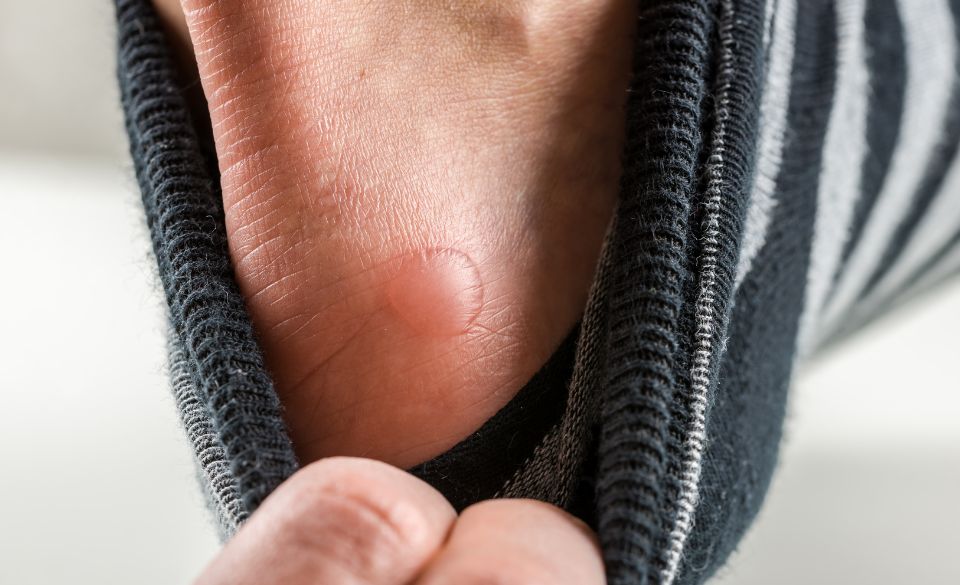
Treat and Prevent Blisters on Your Heel With These Top Tips
Page Contents
Blisters on your heel can be an uncomfortable nuisance, but they’re relatively easy to prevent and treat. Blisters develop when skin is rubbed by a shoe, sock, or other material, and can make walking and other activities very painful. Fortunately, there are simple steps you can take to prevent blisters, as well as easy methods of relief if they do occur.
Why Are Runners Susceptible to Blisters On The Heel
Runners are more susceptible to blisters on the heel due to a few key factors. One is that the heel area is exposed to more friction when running than other parts of the foot. This is because the heel area is in contact with the ground for a longer period of time than other parts of the foot. Additionally, the heel area is relatively flat, which means that any slight irregularity in the terrain can cause the skin to rub against it, leading to blisters.
Finally, Here are some top tips to treat and prevent blisters on your heel:
Tips To Prevent Blisters On You Heel When Running
1. Wear the Right Shoes – The first and perhaps most important tip for preventing blisters on your heel when running is to wear the right shoes. Choose shoes that fit your feet properly. Avoid shoes that are too tight or too loose. Always break in your new shoes before running in them.
2. Wear Socks – It’s important to wear socks when running. This will reduce friction between your skin and your shoes. Choose socks that are made from breathable fabrics and have a snug fit.
3. Lubricate Your Feet – Before running, it’s a good idea to lubricate your feet. This will help to reduce the friction between your skin and your shoes. Choose a lubricant that is specifically designed for feet.
4. Tape Your Heels – Taping your heels can help to reduce the friction between your skin and your shoes. There are many different types of tape available for this purpose. Talk to a professional about which tape is best for your needs.
5. Change Your Shoes Regularly – Over time, the interior of your shoes will become worn and the cushioning may decrease. This can lead to blisters. To avoid this, make sure to change your shoes regularly.
6. Take Breaks – If you’re running for an extended period of time, take regular breaks. This will give your feet a chance to rest and reduce the risk of blisters.
Blisters on your heel can be painful and can hinder your running progress. By following these tips, you can reduce the risk of developing them. Remember to wear the right shoes, lubricate your feet, and take regular breaks.
How To Treat Blisters On You Heel
If you’ve ever suffered from blisters on your heel, you know how painful and uncomfortable it can be. Although blisters can be caused by a variety of conditions, including ill-fitting shoes or skin infections, the most common cause is friction. It’s important to know how to treat blisters on your heel, since ignoring them can lead to further complications. Here’s what you should do.
First, be sure to clean the area with a mild soap and water. Pat the area dry with a clean towel and don’t apply any lotions or creams to the area. After the blisters have dried, cover them with a bandage to help protect against further irritation.
If the blister is intact, you may not want to pop it. Instead, you can use a sterile needle to puncture a tiny hole in the blister, allowing the fluid to drain. Be sure to wash the area again after draining and dry the area with a clean towel.
Once the blister is drained, you can apply a thin layer of petroleum jelly or an antibiotic ointment to the area to help the blister heal faster. If the area is especially itchy or uncomfortable, wrap it in a sterile gauze bandage or a non-adhesive dressing.
If the blister pops on its own, clean the area again and cover the blister with a bandage or dressing. You may also want to take an over-the-counter pain reliever, such as ibuprofen or acetaminophen, to help ease the pain.
If the blister doesn’t seem to be healing or if the blisters are accompanied by other symptoms, such as fever or redness, see your doctor. Your doctor can prescribe an antibiotic or a medicated cream to help treat the blisters.
By taking proper care of your blisters, you can help avoid further complications and speed up the healing process. Just be sure to clean the area, cover it with a bandage, and apply a topical cream or ointment to the area as needed.


